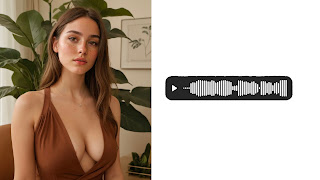Commented on your post, tap to see more…
Digital Art: A Realm of Creative Expression and Personal Gain
Digital art has revolutionized the creative landscape, empowering artists to produce stunning works that captivate audiences worldwide. Beyond its aesthetic appeal, digital art serves as a means for individuals to achieve personal gain, whether financial, emotional or professional.
Types of Digital Art
1. Graphic Design: Visual communication through logos, typography and branding.
2. Digital Painting: Artistic expressions using software like Adobe Photoshop.
3. 3D Modeling: Sculpting and rendering three-dimensional objects.
4. Digital Photography: Enhanced and manipulated images.
5. NFTs (Non-Fungible Tokens): Unique, blockchain-based art pieces.
Personal Gain through Digital Art
1. Financial Gain: Selling art pieces, offering commissions or licensing work.
2. Emotional Expression:
Therapeutic outlet for emotions, experiences and ideas.3. Professional Development: Building portfolios, attracting clients or employment.
4. Personal Branding: Establishing online presence through distinctive art styles.
5. Social Impact: Raising awareness about social issues, environmental concerns.
Platforms for Digital Artists
1. Behance: Showcase portfolios and connect with industry professionals.
2. DeviantArt: Community-driven platform for sharing art.
3. ArtStation: Platform for artists, designers and creatives.
4. Etsy: Marketplace for selling digital art, prints and merchandise.
5. OpenSea: NFT marketplace for buying, selling and trading.
Techniques for Monetizing Digital Art
1. Online Courses: Teaching art skills through tutorials and workshops.
2. Affiliate Marketing: Promoting art software, tools or resources.
3. Sponsored Content: Collaborating with brands for commissioned art.
4. Print-on-Demand: Selling art prints, merchandise through online stores.
5. Crowdfunding: Funding projects through platforms like Kickstarter.
Future of Digital Art
1. Advancements in AI: Integrating artificial intelligence in creative processes.
2. Virtual Reality (VR) and Augmented Reality (AR): Immersive art experiences.
3. Blockchain Technology: Secure, transparent art ownership and distribution.
4. Global Accessibility: Digital art marketplaces and platforms.
Conclusion
Digital art has transformed the creative industry, offering unparalleled opportunities for personal gain. By leveraging digital platforms, techniques and technologies, artists can showcase their talents, build successful careers and inspire others.
References
1. Adobe. (2022). Digital Art Trends.
2. ArtMarketWatch. (2022). Digital Art Market Report.
3. Forbes. (2022). How Digital Artists Make Money.
4. The Verge. (2022). Future of Digital Art.
5. Digital Art Tutorials. (2022). Techniques and Software.




Comments
Post a Comment